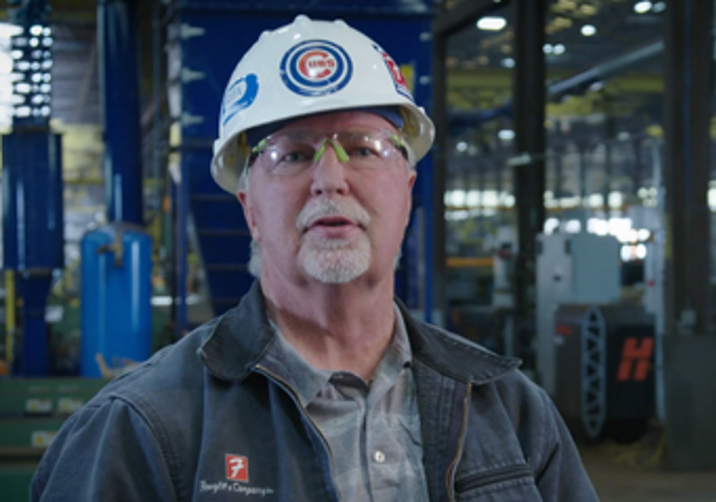
Before we had the XPR300® system, we struggled to be competitive in pipe and tube and plate cutting.”
Fought & Company
Structural steel
Read more
Hypertherm Associates’ robotic technologies provide cutting-edge cutting capabilities to support your most complex projects, whether you are cutting structural steel shapes for a building, stadium, or bridge, a dome or pipe for a pressure vessel, or cast trimming.
Robotic cutting systems are designed to easily cut various shapes using powerful and intuitive robot programming software. Traditionally, machines were needed to saw, mark, cope, drill, punch, and/or shear complex shapes. However, robotic cutting technology advances have helped customers dramatically increase productivity by eliminating these manual operations — increasing cut speeds, cut quality, and productivity in low-volume runs.
Many robotic pipe and structural steel plasma cutting applications require greater reach and control into tighter cut spaces that longer torches can't reach. Unlike traditional 2D cutting, robotic movements on complex geometry parts can add additional stress to lead sets from increased bending and flexing.
Hypertherm Associates has developed specific lead sets and torches for its XPR®, HyPerformance®, and Powermax® plasma systems that allow greater flexibility and protection from extreme heat and molten splash. Various structural steel cutting techniques allow cutting from underneath the structural piece or directly on the inside of the web/flange corner of a beam increasing lead proximity and exposure to heat and molten metal blowback.
Robotic cutting software, such as Hypertherm Associates' Robotmaster® offline programming software for robots, has significantly reduced the time it takes to program complex jobs. What used to take days now takes hours, making today's robotic cutting systems incredibly efficient.
Learn about EV cast cutting with plasma robotic cutting systems.